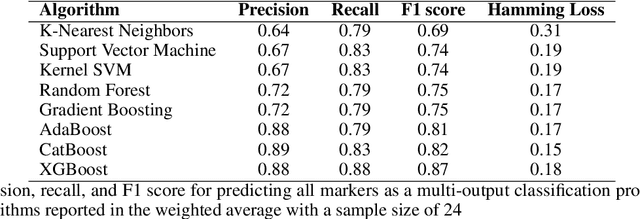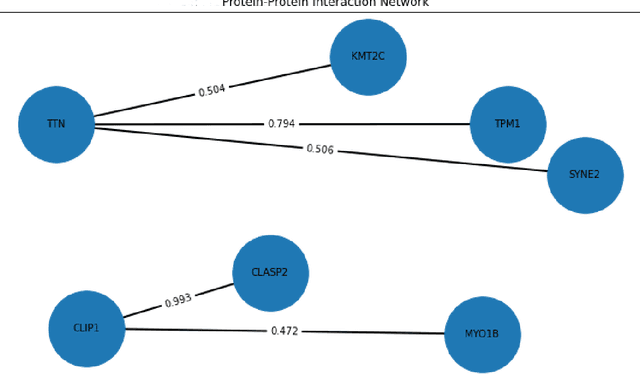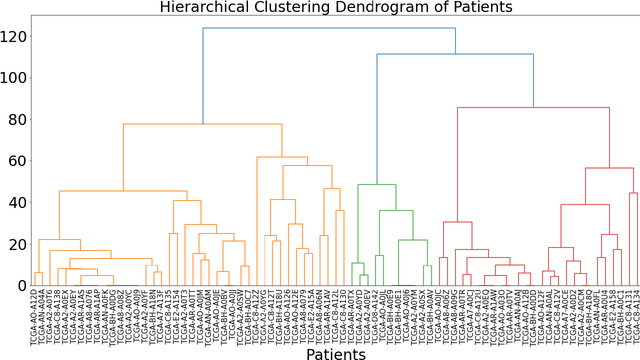Hossein Sholehrasa
HySim-LLM: Embedding-Weighted Fine-Tuning Bounds and Manifold Denoising for Domain-Adapted LLMs
Oct 09, 2025Abstract:The extraction and standardization of pharmacokinetic (PK) information from scientific literature remain significant challenges in computational pharmacology, which limits the reliability of data-driven models in drug development. Large language models (LLMs) have achieved remarkable progress in text understanding and reasoning, yet their adaptation to structured biomedical data, such as PK tables, remains constrained by heterogeneity, noise, and domain shift. To address these limitations, we propose HySim-LLM, a unified mathematical and computational framework that integrates embedding-weighted fine-tuning and manifold-aware denoising to enhance the robustness and interpretability of LLMs. We establish two theoretical results: (1) a similarity-weighted generalization bound that quantifies adaptation performance under embedding divergence, and (2) a manifold-based denoising guarantee that bounds loss contributions from noisy or off-manifold samples. These theorems provide a principled foundation for fine-tuning LLMs in structured biomedical settings. The framework offers a mathematically grounded pathway toward reliable and interpretable LLM adaptation for biomedical and data-intensive scientific domains.
Predictive Modeling and Explainable AI for Veterinary Safety Profiles, Residue Assessment, and Health Outcomes Using Real-World Data and Physicochemical Properties
Oct 01, 2025Abstract:The safe use of pharmaceuticals in food-producing animals is vital to protect animal welfare and human food safety. Adverse events (AEs) may signal unexpected pharmacokinetic or toxicokinetic effects, increasing the risk of violative residues in the food chain. This study introduces a predictive framework for classifying outcomes (Death vs. Recovery) using ~1.28 million reports (1987-2025 Q1) from the U.S. FDA's OpenFDA Center for Veterinary Medicine. A preprocessing pipeline merged relational tables and standardized AEs through VeDDRA ontologies. Data were normalized, missing values imputed, and high-cardinality features reduced; physicochemical drug properties were integrated to capture chemical-residue links. We evaluated supervised models, including Random Forest, CatBoost, XGBoost, ExcelFormer, and large language models (Gemma 3-27B, Phi 3-12B). Class imbalance was addressed, such as undersampling and oversampling, with a focus on prioritizing recall for fatal outcomes. Ensemble methods(Voting, Stacking) and CatBoost performed best, achieving precision, recall, and F1-scores of 0.95. Incorporating Average Uncertainty Margin (AUM)-based pseudo-labeling of uncertain cases improved minority-class detection, particularly in ExcelFormer and XGBoost. Interpretability via SHAP identified biologically plausible predictors, including lung, heart, and bronchial disorders, animal demographics, and drug physicochemical properties. These features were strongly linked to fatal outcomes. Overall, the framework shows that combining rigorous data engineering, advanced machine learning, and explainable AI enables accurate, interpretable predictions of veterinary safety outcomes. The approach supports FARAD's mission by enabling early detection of high-risk drug-event profiles, strengthening residue risk assessment, and informing regulatory and clinical decision-making.
Integrating Protein Sequence and Expression Level to Analysis Molecular Characterization of Breast Cancer Subtypes
Oct 02, 2024



Abstract:Breast cancer's complexity and variability pose significant challenges in understanding its progression and guiding effective treatment. This study aims to integrate protein sequence data with expression levels to improve the molecular characterization of breast cancer subtypes and predict clinical outcomes. Using ProtGPT2, a language model designed for protein sequences, we generated embeddings that capture the functional and structural properties of proteins sequence. These embeddings were integrated with protein expression level to form enriched biological representations, which were analyzed using machine learning methods like ensemble K-means for clustering and XGBoost for classification. Our approach enabled successful clustering of patients into biologically distinct groups and accurately predicted clinical outcomes such as survival and biomarkers status, achieving high performance metrics, notably an F1 score of 0.88 for survival and 0.87 for biomarkers status prediction. Analysis of feature importance highlighted key proteins like KMT2C, GCN1, and CLASP2, linked to hormone receptor and Human Epidermal Growth Factor Receptor 2 (HER2) expression, which play a role in tumor progression and patient outcomes, respectively. Furthermore, protein-protein interaction networks and correlation analyses revealed the interdependence of proteins that may influence breast cancer subtype behaviors. These findings suggest that integrating protein sequence and expression data provides valuable insights into tumor biology and has significant potential to enhance personalized treatment strategies in breast cancer care.
Knowledge in Triples for LLMs: Enhancing Table QA Accuracy with Semantic Extraction
Sep 21, 2024Abstract:Integrating structured knowledge from tabular formats poses significant challenges within natural language processing (NLP), mainly when dealing with complex, semi-structured tables like those found in the FeTaQA dataset. These tables require advanced methods to interpret and generate meaningful responses accurately. Traditional approaches, such as SQL and SPARQL, often fail to fully capture the semantics of such data, especially in the presence of irregular table structures like web tables. This paper addresses these challenges by proposing a novel approach that extracts triples straightforward from tabular data and integrates it with a retrieval-augmented generation (RAG) model to enhance the accuracy, coherence, and contextual richness of responses generated by a fine-tuned GPT-3.5-turbo-0125 model. Our approach significantly outperforms existing baselines on the FeTaQA dataset, particularly excelling in Sacre-BLEU and ROUGE metrics. It effectively generates contextually accurate and detailed long-form answers from tables, showcasing its strength in complex data interpretation.
 Add to Chrome
Add to Chrome Add to Firefox
Add to Firefox Add to Edge
Add to Edge